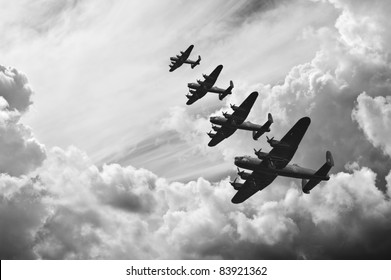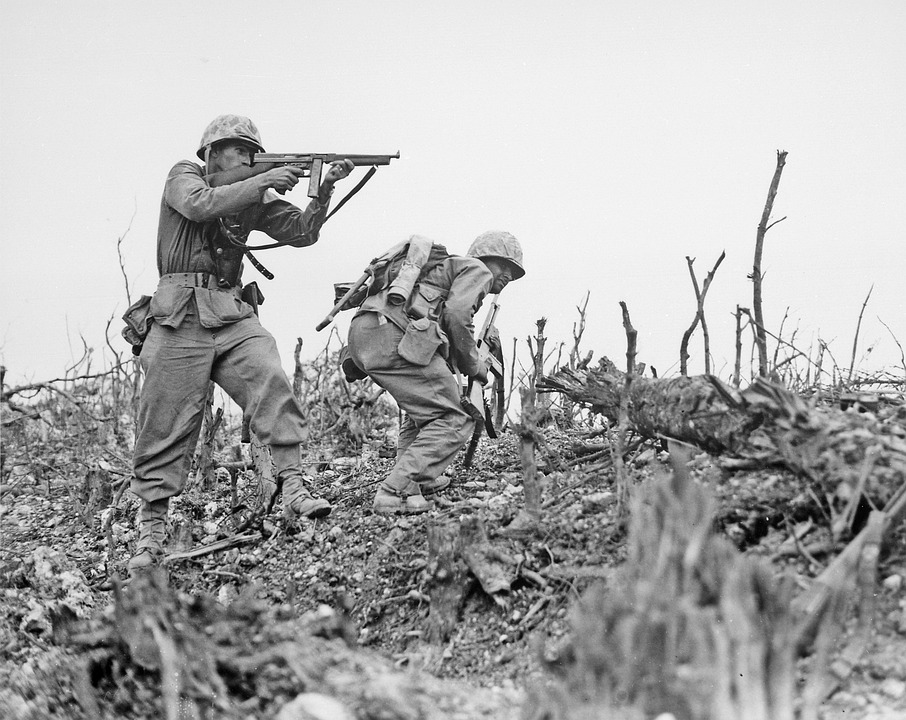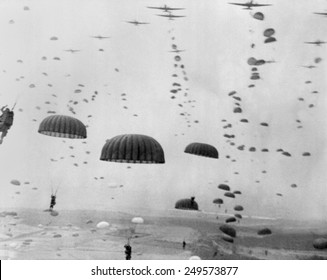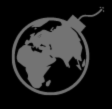Beginning of the Second World War:
- World War 2 also known as the Second World War was a global conflict which lasted from 1st September 1939 to 2nd September 1945.
- This war originated in Europe and was fought in Europe, Pacific, Atlantic, South-East Asia, China, Middle East, Mediterranean, North Africa, Horn of Africa, Australia, North America and South America.
- It was one of the most destructive wars in human history.
Causes:
- In 1933, Hitler became the dictator of Germany by the Fire Decree of 1933. He overtook Germany and pulled Germany out of the League of Nations.
- With the Fire Decree, Hitler also violated the terms of Treaty of Versailles of 1919 and refused to pay First World War reparations. Hitler also reoccupied resource rich Rhineland in 1936 which Germany lost to France after First World War under Treaty of Versailles.
- Hitler under the slogan “One people, One empire, One Leader” integrated Austria and Germany in 1938.
- In 1938, Hitler tried to wrest the German speaking Sudetenland from Czechoslovakia and then gobbled up the whole country.
- When this happened, France and Britain warned Germany that expansion of any European country in future would not be tolerated.
- But when Hitler again invaded Poland in 1939, France and Britain declared war on Germany on 1st September 1939.
- A tripartite act was signed between Germany, Italy and Japan and these powers were called the Axis powers.
- When Hitler attacked Soviet-union in September 1941, Soviet-union declared war on Germany and joined the Allied powers.
Belligerents:
- There were two sides in this war. One was the Allied Powers and the other one was the Axis Powers.
- The Allied Powers consisted of the U.S, Soviet Union, British Empire, China, France, Poland, Belgium, Netherlands, Norway, Luxembourg, Czechoslovakia and some other co-belligerents.
- The Central Powers consisted of German Reich, Kingdom of Italy, Empire of Japan, and other co-belligerent states such as Kingdom of Hungary, Kingdom of Romania, a
- Soviet Union was under Joseph Stalin, U.S under Franklin D. Roosevelt, Britain under Winston Churchill and China was under Chaing kai-shek.
- Whereas, Nazi Germany was under Adolf Hitler, Japan was under Emperor Hirohito and Italy was under Benito Mussolini.
Casualties and losses:
- Even today, World War 2 is considered to be one of the deadliest wars ever fought by Mankind.
- A total of 61,000,000 individuals of the Allied powers were killed out of which 16,000,000 were military personnel and 45,000,000 were civilians.
- A total of 12,000,000 individuals of the Axis Powers were killed out of which 8,000,000 military personnel and 4,000,000 were civilians.
Overview:
- Japan’s main aim was to control the Asia and the Pacific. In Asia Japan gained much control by invading the much of the Chinese territory and other countries of the south-east Asia. To gain control in the pacific theater, the Japanese were planning a surprise attack to weaken the U.S military so as to invade U.S easily.
- In Europe, when Britain and France declared war on Germany in 1939, all that happened for the next few months was ‘Phony War’. During this period, not much fighting took place. Germany, France and Britain just sat around with their armies mobilized.
- This ‘Phony War’ gave time Hitler time to prepare his armies for the invasion of France.
- The allies asked Belgium to place their troops in along the German-Belgian border to prevent the repeat of First World War. But, Belgium refused. What happened next was invasion of Belgium.
- Hitler sent hundreds and thousands of troops through Belgium to dodge the Maginot Line (A line of defence with bunkers, trenched defences and millions of French troops that was believed to be very difficult to penetrate) along Franco-German border. France did not extend the maginot line all the way to the Belgian Border.
- When Hitler marched his armies through Belgium, allied forces rushed to stop them. But France had left the Ardennes region. Ardennes region was a thick forest region. France thought that it would be impossible for Germans to penetrate.
- But Hitler managed send a large force that passed through Ardennes and encircled the French and British Armies in Dunkirk. While most of the French forces were captured, British men were rescued by Royal Navy and Churchill’s civilian fleet in the last seconds.
- Italy under Benito Mussolini declared war just some time before France fell. With major part of French Army captured, Germany completely conquered France on 10th June and France fell. Italy was also at war with Ethiopia which it later won.
- Germany in 1940 invaded Norway and Denmark to secure Iron ore from Sweden. Allies failed in the Norwegian campaign.
- When Germany attacked Soviet in 1941, its forces were separated into two parts. One part was fighting in the Eastern front against the Soviet forces. The other one was fighting against the British forces trying to get control over France back.

- At the mid of 1942, the Soviet forces were fully mobilised and with the winter season the coming over, the German forces started moving back.
- In the pacific theatre, Japan finally attacked the U.S Pearl Harbour, in the December of 1941. Many U.S warships were destroyed in the Pearl Harbour attack. This led to the entry of U.S into the war.
- Thus when U.S declared war on Japan and joined the Allied Powers, Germany declared war on U.S and other allied powers declared war on Japan.

- The Japanese power in the pacific reduced gradually after the Battle of Midway. It was a direct conflict between the United States Navy (USN) and the Imperial Japanese Navy (IJN). It resulted in decisive U.S victory and it was also the turning point in war in the pacific theatre as four of the Japanese aircraft carriers were sunk.

- By the mid-November German forces had pushed Soviets into the Soviet city of Stalingrad. By then, the Soviet soldiers mobilized and they stopped the German advance.
- This was the turning point in the Eastern Front. By the end of 1943, Allies had gained momentum and they started pushing back the Axis powers on all the fronts.

- Italy signed the Armistice of Cassibile with Allies on 3rd September 1943. With this Italy surrendered.
- The Western front in Europe was in control of Germans only until the end of the mid 1944. On 6th June 1944, known as the (D-Day), the Western allies made successful landings in Northern French city Normandy.

- This was the turning of war in the Western front. On 25th August, Paris was liberated by the local resistance by free French forces led by General Charles De Gaulle.
- After this, the Allies went on pushing back the Germans. When the Allies reached the German capital Berlin. Finally, the German forces surrendered on 30th May and the war was over in Europe.
- One main reason behind the German surrender was the death of Adolf Hitler. He was said to have committed suicide in his bunker on 30th May as Berlin was surrounded by Allied forces.
- Even though World War 2 was finally over in Europe, the war continued in the pacific between U.S and Japan.
- An ultimatum was sent to Japan to surrender. But, Japan rejected the unconditional surrender and demanded for negotiation about fairer surrender terms.
- With this, U.S dropped two atomic bombs over Japanese cities of Hiroshima and Nagasaki. Both the cities were completely destroyed and devastated.
- The Kwangtung army, the largest Japanese fighting force was also defeated by the Soviets between the time periods of two bombings. This forced the leaders of the Imperial Japanese Army to surrender. Thus, Japan surrendered on 15th August 1945 ending the war.


Pingback: 20th Century: Wars and Battles - WarsAndWeapons
Pingback: First World War: An Era of Trench Warfare - WarsAndWeapons